Guide H-657
Richard Heerema, Natalie Goldberg, and Steve Thomas
College of Agricultural, Consumer and Environmental Sciences, New Mexico State University
Authors: Respectively, Extension Pecan Specialist, Department of Extension Plant Sciences; Extension Plant Pathologist, Department of Extension Plant Sciences; and Professor, Department of Entomology, Plant Pathology, and Weed Science, all of New Mexico State University. (Print Friendly PDF)
The pecan is well adapted as a commercial crop or an ornamental shade tree in southern New Mexico. Because of dry atmospheric conditions during the growing season, few infectious diseases are a problem in New Mexico compared to other pecan growing areas. The pecan, however, is not exempt from problems. There are a few diseases that are caused by infectious microorganisms, as well as some abiotic disorders caused by non-living entities, that can cause extensive losses to commercial pecan growers and home orchardists. This publication will briefly discuss these potential problems for pecans. New Mexico growers should also be aware of two potential disease problems, scab and pecan bacterial leaf scorch, that are not known to occur in the state. A brief discussion of these diseases is included to help growers recognize their symptoms in case they appear.
Diseases (Caused by Infectious Microorganisms)
Phymatotrichum Root Rot
Phymatotrichum root rot, also known as cotton root rot or Texas root rot, is caused by the soil-borne fungus Phymatotrichopsis omnivora. This is one of the most destructive diseases known to occur on broadleaf plants. It is extremely difficult to manage this disease because the pathogen has an incredibly wide host range and surefire survival mechanisms. The disease may appear shortly after tree planting, resulting in the loss of young trees, but more significant economic losses occur when the pathogen attacks mature trees in an established orchard. Most orchards affected by Phymatotrichum root rot only suffer loss of a small number of trees. In these orchards, it is best not to replant in spots where trees have died.
The fungus is limited geographically and occurs only in the southwestern United States and in northern Mexico. Fortunately, even in this geographical area, this fungus is generally limited in distribution and does not readily spread from one location to another. It also occurs only at elevations below 5,000 ft and is typically found in relatively small areas. The fungus is restricted to alkaline soils with low organic matter. It attacks over 2,300 species of broadleaf plants, but does not attack grasses or other monocots. The fungus spreads slowly from plant to plant by growing from an infected plant through the soil to a nearby healthy plant or through root grafting. The fungus does not produce viable spores, and there is no means of air-borne spread.
The fungus is active in the summer and fall when air and soil temperatures are high. When environmental conditions are favorable for fungal activity, the pathogen invades plants through their root systems. Infected roots rot and cannot transport water to the above-ground portion of the plant. The first symptom is a slight yellowing of the leaves followed by the leaves quickly turning to a bronze color. The tree dies, but the leaves remain firmly attached (Figure 1). In some cases, trees die so quickly that the leaves hardly change color, though they will become brittle and dry. When pecan roots are infected, tree death may occur suddenly or more slowly over time, but the end result is the same.

Figure 1. Pecan tree killed by Phymatotrichopsis omnivora.
Additional symptoms include extensive rotting of the roots (Figure 2), the presence of a reddish lesion around the crown of the tree just above the soil line, and fungal strands on the roots (Figure 3). A good hand lens or microscope may be needed to confirm the presence of fungal strands on the roots. The fungal strands are made of cruciform shaped hyphae (Figure 4), which are unique to this fungus. As such, confirmation of the disease can be made with microscopic examination of the strands. Lastly, during warm, wet conditions, a whitish-tan spore mat may appear on the soil near infected trees (Figure 5). These spore mats indicate the presence of the pathogen; however, the spores produced are not viable, and the mats do not spread the fungus to healthy trees.

Figure 2. Root rot caused by Phymatotrichopsis omnivora.

Figure 3. Fungal strand of Phymatotrichopsis omnivora on a pecan root

Figure 4. Microscopic cruciform hyphae unique to Phymatotrichopsis omnivora.

Figure 5. Spore mat of Phymatotrichopsis omnivora.
Research on ways to manage Phymatotrichum root rot has been extensive, yet no effective long-term management methods exist. There are no resistant or tolerant pecan varieties. The best recommendation is to avoid planting pecan orchards in sites known to be infested with the fungus. Old abandoned cotton or alfalfa fields are risky sites for orchard plantings because the pathogen is likely to be present. Additionally, uncultivated land heavy in mesquite or creosote may not be good locations for orchards. These plants are known to harbor the pathogen without showing symptoms of disease. Treating soils with fungicides or fumigants is ineffective because the pathogen survives very deep in the soil, and these materials can only penetrate to a limited depth.
Altering the soil environment so that it does not favor the pathogen has been used in some areas to reduce fungal activity or delay the appearance of disease symptoms. This practice consists of loosening the soil in a broad and relatively shallow basin just beyond the drip line around infected trees. The area is then covered to a depth of 2 in. with manure or similar organic matter. Ammonium sulfate and sulfur are layered on top of the organic matter, each at a rate of 1 lb/10 ft2. The basin is then immediately flooded with enough water to wet the soil to a depth of 3 ft. This high level of soil moisture must be maintained for several weeks. If trees are treated before permanent wilting, they may recover. Known root rot–infested areas should be treated every year in March or April. The labor and costs involved make this strategy impractical for commercial pecan growers. This practice may reduce the activity of the fungus if it is followed every year; however, the disease will reoccur if the soil returns to its typical state (high pH and low organic matter).
Some success has been achieved in reducing the effect of the disease by growing and incorporating a green manure cover crop over the orchard floor. This helps to stimulate vigorous rooting of the trees, enabling them to better withstand disease pressure. Additionally, the incorporation of the cover crop into the soil may help to stimulate soil microflora, which compete with P. omnivora.
Powdery Mildew
This fungal disease, caused by Microsphaera penicillata, is of minor importance in New Mexico, but pecan trees may occasionally be affected following periods of high humidity and cool summer nights where airflow through the canopy is restricted. The fungus forms a white powdery growth on the nuts (Figure 6) and in some cases may be found on the leaves (Figure 7). The white powdery fungus may disappear later, but affected nuts will have a brown russet appearance (Figure 8). Nuts may be small and not reach their full size when they are infected early in the growing season, or the shucks may split prematurely and kernels may be shriveled. Powdery mildew typically does not cause significant damage to pecan trees; therefore, treatment for the disease is unnecessary.

Figure 6. Powdery mildew on pecan nuts.

Figure 7. Powdery mildew on pecan leaves.

Figure 8. Russet appearance on pecan nuts from infection by powdery mildew.
Crown Gall
Crown gall is a disease caused by the soil-borne bacterium Agrobacterium tumefaciens. It occasionally infects pecan trees. The disease appears in many other plant species, encompassing more than 40 plant families. The most common symptom is the presence of wart-like growths or tumors on the roots (Figure 9), or more often at the base of the trunk near the soil line (Figure 10). The galls are usually rounded with irregular rough surfaces. They vary in size from pea-size to several inches in diameter. Symptoms on infected trees develop slowly over many years, with infected trees exhibiting poor vigor. They may fail to produce new leaves and may exhibit dieback. Severely infected trees eventually die.
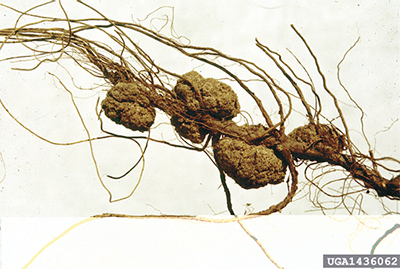
Figure 9. Crown gall on pecan roots (Clemson University, USDA Cooperative Extension Slide Series, Bugwood.org).
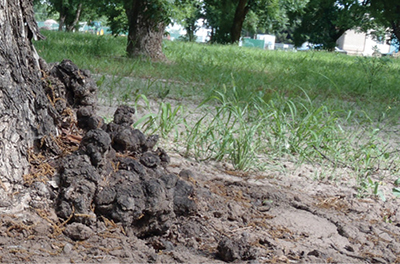
Figure 10. Crown gall on trunk of a pecan tree.
The bacterium enters plant tissue through wounds caused by cultivation, chewing insects, and nematodes. In young orchards, tillage equipment is frequently responsible for injuries that lead to crown gall infection. The bacterium can be passed from diseased to healthy plants by contaminated grafting and pruning tools. Tools should be decontaminated between trees by treating with rubbing alcohol. Growers should also avoid laying tools on the soil. Young trees may also be infected in the nursery, and the bacterium can be carried long distances in nursery stock.
There are no practical management options for plants infected with crown gall. Growers should inspect nursery stock carefully upon arrival and reject any plants with suspicious knots or galls.
Nematodes
Plant-parasitic nematodes are microscopic worms that feed on the roots of susceptible plants. Many different types can be found around the roots of all trees. Nematodes usually cause little damage to pecan in New Mexico (Table 1). One exception is the pecan root-knot nematode (Meloidogyne partityla), which can cause moderate to severe root damage resulting in dieback of young branches and tree decline. Damage is worse in years following heavy nut production (Figure 11). Mouse ear (see Mouse Ear section) symptoms may also be observed due to nickel deficiency caused by disrupted nutrient uptake in nematode-damaged roots. Careful examination of feeder roots from infected trees will show small knots or galls produced by pecan root-knot nematodes (Figure 12).
| Table 1. Plant-Parasitic Nematodes Recovered from 155 Pecan Orchards (5,940 acres sampled) in Chaves, Doña Ana, Eddy, Lea, Luna, Otero, and Sierra Counties, 2005 to 2006 | ||||
| Nematode | Acreage infested as % of total orchard | Nematodes per 100 cc of soil | Damage potential | |
| Range | Average | |||
| Pecan root-knot (Meloidogyne partityla) | 3.2 | 10–80 | 34 | high |
| Lesion (Pratylenchus spp.) | 29.3 | 10–120 | 32 | low |
| Stunt (Tylenchorhynchus spp.) | 21.4 | 10–90 | 28 | very low |
| Ring (Mesocriconema spp.) | 56.2 | 10–680 | 132 | low |
| Spiral (Helicotylenchus spp.) | 5.3 | 10–40 | 26 | very low |
| Stubby root (Trichodorus spp.) | 10.2 | 10–40 | 14 | very low |
| Dagger (Xiphinema americanum) | 6.6 | 10–80 | 33 | low |

Figure 11. Dieback and tree decline caused by root-knot nematode.

Figure 12. Galls on pecan roots caused by root-knot nematode.
Pecan root-knot nematode occurs in Arizona, Florida, Georgia, New Mexico, Oklahoma, and Texas. Locally, this pest has been found in a small number of orchards in Doña Ana and Chaves counties, Cochise County in Arizona, and El Paso and Dawson counties in Texas. Damage occurs when the nematode invades young pecan roots. Once inside, the parasite transforms root tissue to form specialized feeding sites and galls. The nematode utilizes carbohydrates that would normally be used by developing leaves and nuts. Nematode feeding sites and the associated galls also disrupt root tissue, interfering with normal water and nutrient uptake. Nematodes begin laying eggs 3 to 4 weeks after invasion. Each female nematode produces 200 to 500 eggs, and several generations may occur each year. As a result, trees can become heavily colonized by pecan root-knot nematode very quickly, particularly in sandy soils that favor nematode movement. Highest numbers can be found in early fall and early spring following flushes of new root growth, but galled roots can be observed throughout the year.
To determine if a tree is infected with pecan root-knot nematode, a sample of soil and roots should be sent to a lab that runs nematode analysis and can identify the particular pest species. Three other root-knot nematodes, the southern (Meloidogyne incognita), northern (M. hapla), and tropical root-knot nematodes (M. javanica), can parasitize weeds or other plants in orchards and can also be recovered from soil samples. Research at NMSU found that New Mexico populations of these species do not reproduce on pecan rootstocks commonly used in the state (‘Burkett’, ‘Riverside’, and ‘Western Schley’), so species identification is crucial to determine whether orchards are infested with pecan root-knot nematode or these other widespread species. Soil and feeder roots (roots about half the diameter of a pencil or smaller) should be collected from five locations around the drip line of the tree, and from five additional locations halfway between the drip line and the trunk. Reaching feeder roots may require digging about 18 in. deep at each location. The soil and roots from the ten sites should be mixed in a bucket and part of the mixture used to fill a gallon zip-lock plastic bag. The bag of soil and root mixture should be kept at room temperature and away from direct sunlight until it reaches the lab.
Treatment of Diseased Trees and Infested
Orchards. The most important consideration with pecan root-knot nematode is to avoid introducing the pest to new areas whenever possible. Unlike southern, northern, and tropical root-knot nematodes, which have broad host ranges that encompass most crops, annual and perennial ornamentals, and weeds in New Mexico, hosts for pecan root-knot nematode are mainly limited to pecan, walnut, and hickory. Root-knot nematodes cannot survive more than 1 to 2 years nor reproduce without a host, so pecan root-knot nematode will only occur where pecans have recently been grown. Transplanting trees or moving equipment with attached soil from infested orchards to non-infested orchards should be avoided. Pecan transplants should be obtained from nurseries known to be free of this nematode. Before replanting an orchard known to be infested with pecan root-knot nematode, plant alfalfa or annual crops for at least three years to starve the pest. Leaving ground fallow is likely to be less effective unless soil is regularly irrigated because the nematode eggs can survive in root debris in dry soil for many years; each irrigation will stimulate some eggs to hatch, and the newly emerged nematodes will starve.
No available pesticide options have been shown to effectively control pecan root-knot nematodes in established orchards. However, adjusting management practices to minimize stress on trees can greatly reduce damage from the nematode. Such practices include reducing overall tree size by pruning, careful attention to irrigation and fertilizer applications to avoid moisture stress or excessive nut load, and avoiding orchard floor management that results in root pruning. Care should also be taken to avoid spreading the nematodes to non-infested irrigation benches within orchards via soil adhering to farm implements or via irrigation water. Careful attention to such management practices has allowed some Southwest growers to achieve very good production from orchards infested with pecan root-knot nematode.
Diseases Not Known to Occur in New Mexico
Scab
Scab, caused by the fungus Cladosporium caryigenum, is a common and damaging disease in many growing areas of the United States. The disease is favored by frequent rains, high humidity, and temperatures over 70°F. It is not known to occur in New Mexico, where dry growing conditions prevail. If inoculum is present and conditions are favorable for infection, the disease could possibly occur, but in New Mexico’s normally dry climate, it would be unlikely to become a recurring problem. Nevertheless, growers should be aware of common symptoms associated with the disease and report any suspected outbreaks to their local Extension personnel.
The fungus infects young, rapidly growing plant tissues and may cause symptoms on leaves, stems, and nuts. The first symptom of the disease is the appearance of small, olive-brown to black, somewhat elongated lesions on infected tissue (Figure 13). As the disease develops, spots may enlarge or coalesce to form black blotches (Figure 14). On nuts, infection begins as small, black spots that become sunken and crusty over time. Shucks of severely infected nuts may be completely blackened by the fungus (Figure 15). Infected nuts may fall or fail to develop. Severe infections may result in a complete loss of the crop. Severe early-season infections may result in defoliation.

Figure 13. Early Scab Infection on Pecan Foliage.
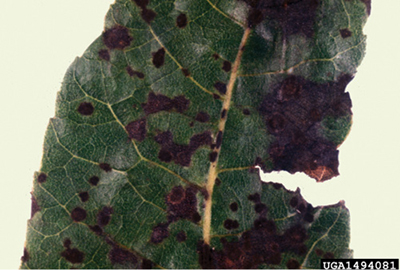
Figure 14. Advanced scab infection on pecan leaf (University of Georgia Plant Pathology Archive, University of Georgia, Bugwood.org).
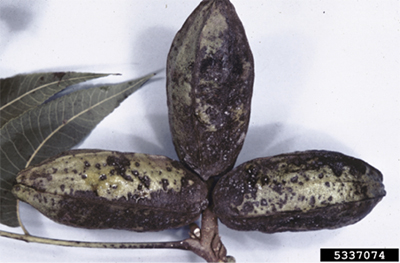
Figure 15. Severe scab infection on pecan shucks (Charles Drake, Virginia Polytechnic Institute and State University, Bugwood.org).
Pecan Bacterial Leaf Scorch
Pecan bacterial leaf scorch is caused by the bacterium Xylella fastidiosa. The bacterium is spread by xylem-feeding insects such as sharp-shooters and spittle bugs, or through infected graft wood. The disease occurs in the southeastern United States, but is not known to occur in New Mexico pecans. However, X. fastidiosa does occur here and causes disease in peach, chitalpa, and grape. Genetic variability in the pathogen may account for the lack of disease in pecan.
Pecan bacterial leaf scorch appears during warm summer months when trees’ water demands are high. The bacterium invades the xylem vessels and restricts water flow in the trees; as a result, symptoms resemble water stress. Symptoms begin as brown to tan necrotic lesions on the tips or margins of the leaves (Figure 16). As the disease advances, necrotic areas progress inward. Eventually, the entire leaf becomes necrotic and prematurely falls from the tree. Dieback and death of limbs associated with this disease in other hardwood trees has not been found to occur in pecans. The disease results in reduced tree growth and poor nut production. Long-term effects of the disease on trees are unknown.
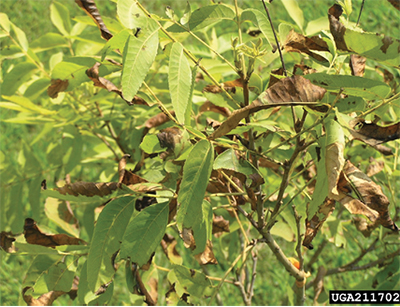
Figure 16. Pecan bacterial leaf scorch (Rebecca A. Melanson, Louisiana State University AgCenter, Bugwood.org).
Disorder Symptoms Commonly Mistaken for Diseases
There are numerous symptoms that regularly occur in New Mexico pecan orchards that can easily be mistaken for disease symptoms, but are actually caused by insects or non-living (“abiotic”) factors.
Chlorosis
The term chlorosis refers to a yellowing of leaves. Chlorosis is usually caused by deficiencies in one or more essential mineral nutrients, including nitrogen (N) and iron (Fe).
Nitrogen-deficient pecan trees exhibit general yellowing throughout the canopy. For N-deficient trees, chlorosis tends to worsen as the season progresses, especially as demand for N spikes during the kernel fill stage in “On” (high-yield) years. Nitrogen deficiency can be corrected over time through soil application of N fertilizers (e.g., urea, ammonium sulfate, UAN 32, etc.). Manures, compost, and N-fixing legume cover crops may also help to supply N.
Iron deficiency differs from N deficiency in that the yellowing occurs primarily between the leaf veins, with the veins retaining a green color (“interveinal chlorosis”; Figure 17). Leaves with severe Fe chlorosis may be very light, almost white, in color. Iron chlorosis is most prevalent in pecan orchards with very high soil bicarbonate levels or poorly drained, waterlogged soils. Often, within affected pecan orchards, only a few scattered trees will display Fe deficiency symptoms, and on affected trees the severity of Fe chlorosis typically varies dramatically among branches in the same canopy. Iron deficiency is usually very difficult to correct. Foliar applications of Fe fertilizers (e.g., iron sulfate) in the spring may afford some benefit, but soil Fe fertilizer applications have generally proven ineffective or impractical. In pecan orchards where soil waterlogging occurs, Fe chlorosis can sometimes be prevented or corrected by breaking up hardpans or other drainage barriers beneath the soil surface, mixing clay and sand layers of stratified soils, and avoiding over-irrigation.
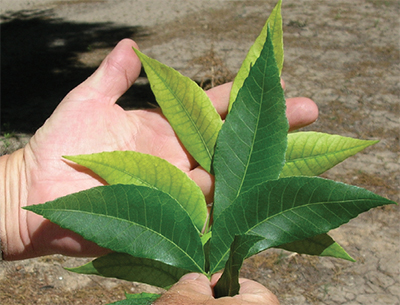
Figure 17. Healthy leaf (on top) and leaf exhibiting interveinal chlorosis (beneath) caused by iron deficiency.
Other nutrients may also cause chlorosis in pecan. Leaf tissue nutrient analysis can be used to determine which nutrient is deficient. Additionally, chlorosis may be a symptom of black aphid feeding injury or accidental exposure of pecan trees to certain herbicides (see Black Pecan Aphid and Herbicide Injury sections).
Rosette and Little Leaf
The complex of symptoms known as “rosette” and “little leaf” in pecan is characterized by very short internodes (the portion of stems between nodes or leaves) and small, often chlorotic leaflets with wavy margins (Figure 18). Rosette is a symptom of zinc (Zn) deficiency (Figure 19). Zinc deficiency is a widespread problem in New Mexico pecan orchards because Zn is poorly available in New Mexico’s alkaline and calcareous soils. However, Zn deficiency may be readily prevented through multiple foliar applications of Zn fertilizers (e.g., Zn sulfate) each spring as the leaves are expanding. Foliar Zn applications should be made before the rosette symptoms arise because these symptoms cannot be reversed within a given season.
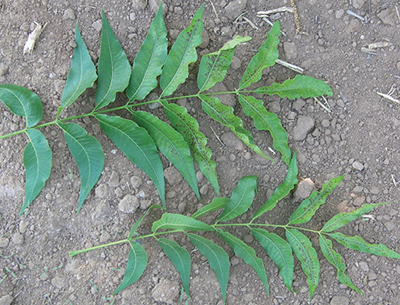
Figure 18. Little leaf symptom caused by zinc deficiency.
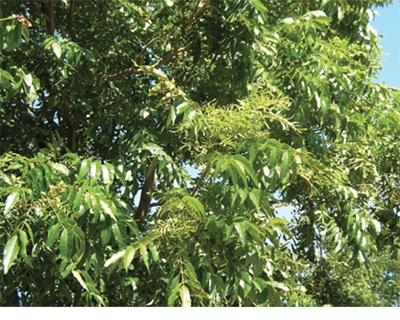
Figure 19. Rosette and little leaf caused by zinc deficiency.
Mouse Ear
Mouse ear (Figure 20) is characterized by small, roundish leaflets. Until recently, the cause of this disorder was unknown (manganese deficiency and freeze injury were suspected causes), but in a USDA-ARS study published in 2004, deficiency in the micronutrient nickel was identified as the cause of mouse ear in pecan. Nickel deficiency may be prevented through foliar application of chelated nickel in spring or fall.
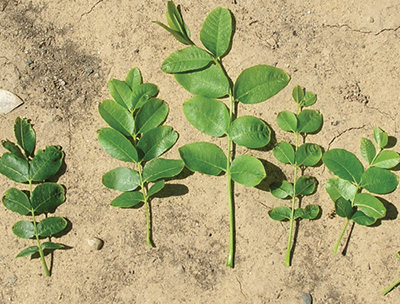
Figure 20. Mouse ear caused by nickel deficiency.
Marginal Leaf Burn
Excessive soil salt levels (salinity) are the primary cause for marginal leaf burn in New Mexico pecan trees (Figure 21). Additionally, boron toxicity causes marginal leaf burn symptoms. In a pecan orchard where there is leaf burn, laboratory soil analyses should be used to confirm that symptoms are indeed due to soil salinity. Irrigation water always contains dissolved salts, and even if salt levels in the irrigation water are relatively low, these salts can accumulate in the soil over time, eventually reaching injurious levels. Orchards with poorly drained clay soils or with physical barriers to water percolation, such as a hardpan layer, are much more prone to salinity issues than orchards with well-drained soils. Since pecan trees are sensitive to soil salts, salinity issues should ideally be addressed before the pecan orchard is planted. Irrigation water and soil from a proposed orchard site should be tested by a laboratory for salt levels, and soils should be evaluated for stratification or physical barriers to water drainage. If irrigation water with acceptable salt levels cannot be practically supplied to the potential orchard site, or if the costs of amending physical drainage barriers at the site are not economically justifiable, then it is best to avoid planting pecans at that site.
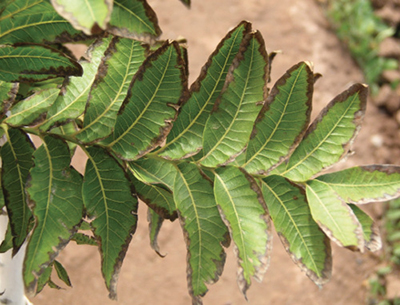
Figure 21. Marginal leaf burn caused by excessive soil salt levels.
If laboratory soil analyses indicate that salinity problems are developing in an existing orchard, the only way to reduce soil salts is by supplying excess water above the tree irrigation requirement (i.e., a “leaching fraction”) to leach salts below the trees’ rootzone. The amount of water required to adequately leach the salts out of a saline soil depends on the levels of salts in both the soil and the water. Amendments such as gypsum, sulfuric acid, and elemental sulfur can be applied to soils with high sodium salt levels to increase water infiltration and allow greater salt leaching. Lastly, in existing orchards it may still be possible to amend the underlying soil drainage problems contributing to the salinity issue by breaking up hard pans or mixing layers between the tree rows.
Premature Nut Drop
As the nuts develop during the season, pecan growers often observe three or four waves of premature nut drop. Weak and unpollinated flowers are shed by pecan trees during the first two waves of nut drop, which occur in May and June. Good orchard management practices (pruning, irrigation, nutrition, and pest control) year after year to minimize tree stresses and proper placement of compatible pollinizer trees may help to reduce loss of crop during these early waves of nut drop. The severity of the third (“July drop”) and fourth (“August drop”) waves can be decreased by providing adequate irrigation and mineral nutrition during the water (liquid endosperm) and kernel fill stages of nut development. Additionally, nuts that have been injured by hail, insects, or animals may also be shed prematurely.
Shuck Necrosis
Various manifestations of shuck tissue necrosis (death) in September and October prior to kernel ripening are a common occurrence in New Mexico pecan orchards. Affected nuts often become “sticktights” (i.e., have tightly adherent shucks, Figure 22) and have poorly-filled or absent kernels, which represent significant nut quality concerns in the pecan industry. While the cause for shuck necrosis has not yet been identified, minimizing tree stresses through adequate irrigation, fertilizer, pest control, and pruning seems to reduce the incidence of shuck necrosis.
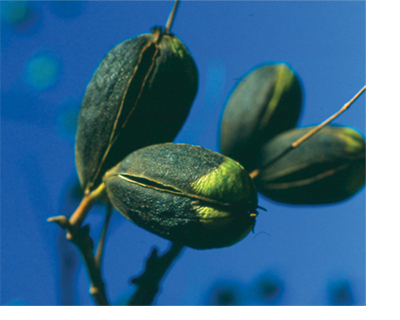
Figure 22. Shuck necrosis.
Water Stage Fruit Split
The nuts of some pecan varieties grown in New Mexico, especially ‘Wichita’, can develop lengthwise splits through both the shuck and shell in the middle of the growing season (Figure 23). Affected nuts are eventually dropped prematurely. Fruit split typically occurs after periods of heavy rainfall and high humidity. There are currently no controls for water stage fruit split.
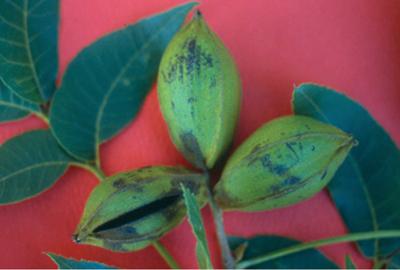
Figure 23. Lengthwise splits resulting from periods of heavy rain and high humidity (a disorder known as water stage fruit split).
Premature Germination
When temperatures remain warm late in the autumn after nut ripening is complete, the natural shuck splitting process may be delayed in many of the common New Mexico pecan varieties. The combination of warm temperatures and high humidity inside the closed shuck triggers germination of the pecan kernel, especially when nut load is heavy (Figure 24). Affected nuts are considered inedible. Premature germination is rarely a concern in New Mexico, but in warmer pecan production areas where it occurs more frequently, producers may “green harvest” their pecans before normal shuck split and before kernels have initiated germination. “Green harvest” creates additional processing expense because, unlike the traditional pecan harvest, it requires mechanical removal of the unsplit pecan shucks and drying of the nuts.

Figure 24. Premature germination (photo by Richard Ng, former Otero County Extension Agent).
Freeze Injury and "Southwest Injury"
Occasionally, pecan trees may be injured by cold temperatures, even in southern New Mexico pecan growing areas. Late spring and early fall freezes injure or kill actively growing tissues, including shoots, leaves, flowers, and nuts. In midwinter, it requires extremely cold temperatures (≤0°F) to directly injure healthy, fully-dormant pecan trees, but thin bark tissues on the south and southwest sides of trees more commonly exhibit “southwest injury” caused by cycling between freezing nighttime temperatures and daytime warming from intense direct sunlight. “Southwest injury” is characterized by dead bark that flakes away from the south- and southwest-facing parts of the trunk or limbs (Figure 25). Painting exposed limbs and trunks with white water-based paint effectively and inexpensively prevents “southwest injury” by reflecting sunlight during the day.
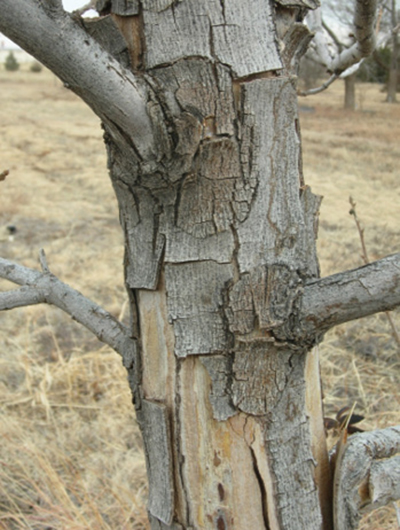
Figure 25a. Southwest injury.
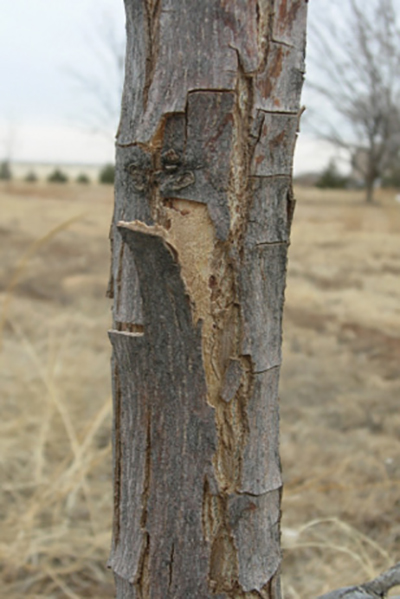
Figure 25b. Southwest injury.
Black Pecan Aphid
Feeding by black pecan aphid (Melanocallis caryaefoliae) results in the development of chlorotic (yellow) and necrotic (dead; reddish or brown) spots on pecan leaves (Figure 26). Some of the affected leaves may prematurely fall from the tree. Black aphid damage may considerably reduce photosynthetic leaf area, especially during the latter half of the growing season, and, consequently, nut yield and quality may be affected in current and subsequent years. Several insecticides are labeled and registered for use against this pest in New Mexico pecan orchards.
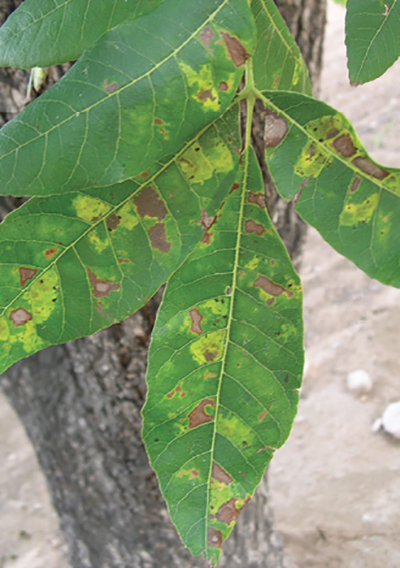
Figure 26. Symptoms caused by black pecan aphid feeding.
Sooty Mold
Sooty mold is a conspicuous black, sooty fungus found on leaves (Figure 27) and nuts of pecans. This fungus is not pathogenic on plants and can easily be removed by rubbing with a clean cloth. It grows on honeydew produced by insects. The direct damage to plants is minimal; however, severe infestations will reduce the amount of light reaching the leaf surface, thus reducing the production of carbohydrates in the tree. Controlling aphids and other honeydew-producing insects should help to control sooty mold.

Figure 27. Sooty mold.
Herbicide Injury
Exposure to herbicides applied in or near orchards may result in serious injury or even death of pecan trees. Symptoms of herbicide injury are varied depending on the type of herbicide to which the trees are exposed. When applying herbicides, all necessary precautions should be taken to avoid inadvertently exposing sensitive pecan tree tissues. Special care should be taken to use properly shielded sprayers, avoid herbicide application on windy days, and use only herbicide rates and timings directed by the herbicide label.
Submission of Plant Specimens for Disease Diagnosis
The New Mexico State University Plant Diagnostic Clinic provides diagnostic services to clientele in New Mexico, including identification of plant diseases such as nematodes, abiotic disorders, arthropods, and weeds. Instructions for submitting samples to the clinic can be found in NMSU Extension guide H-158, How to Collect and Send Plant Specimens for Disease Diagnosis (https://pubs.nmsu.edu_h/H158/), and on the NMSU Plant Diagnostic Clinic website (https://aces.nmsu.edu/ces/plantclinic/). Growers who wish to use the clinic are advised to contact their local county Extension agent for assistance.
For further reading
H-656: Integrated Weed Management in Pecan Orchards
https://pubs.nmsu.edu/_h/H656/
H-658: Diagnosing Nutrient Disorders of New Mexico Pecan Trees
https://pubs.nmsu.edu_h/H658/
CR-683: Pecan Weevil: Wanted DEAD, Not Alive
https://pubs.nmsu.edu/_circulars/CR683/
To find more resources for your business, home, or family, visit the College of Agricultural, Consumer and Environmental Sciences on the World Wide Web at pubs.nmsu.edu
Contents of publications may be freely reproduced for educational purposes. All other rights reserved. For permission to use publications for other purposes, contact pubs@nmsu.edu or the authors listed on the publication.
New Mexico State University is an equal opportunity/affirmative action employer and educator. NMSU and the U.S. Department of Agriculture cooperating.
November 2010 Las Cruces, NM


